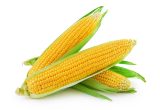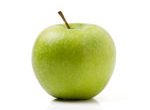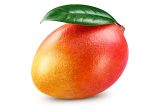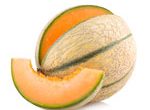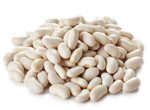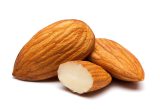Tomato (ribbed)

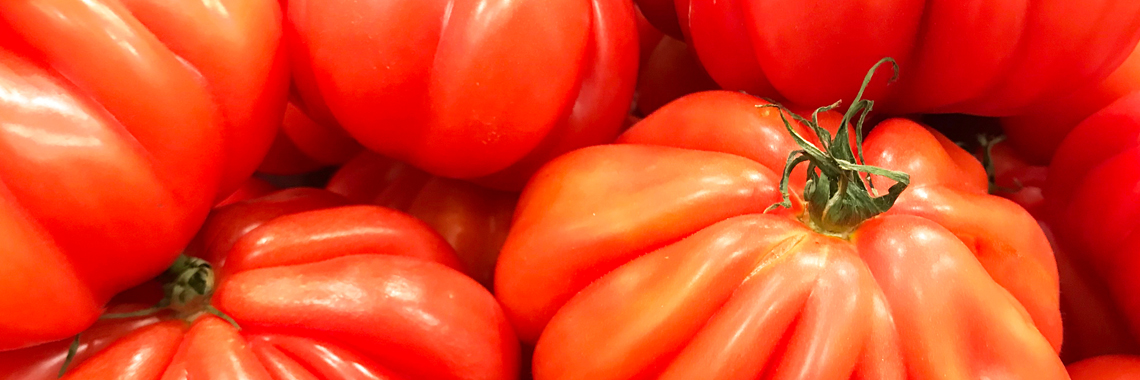
Description
- The ribbed or beef tomato belongs to the Solanaceae family, genus Solanum, species Solanum lycopersicum.
- From the French region of Marmande, in Lot-et-Garonne, it takes its name from its particular heart and ribbed shape (ATP Marmande, 2020).
- In the 18th century, the tomato from America was first brought to Spain and Italy, then introduced into Provence (ATP Marmande, 2020). Through natural hybridisation, other tomato varieties such as “la merveille des marchés”, “la ponderosa” and “mikado”, are thought to have given rise to the Marmande tomato, after adaptation to the climate and soil (ATP Marmande, 2020).
- Contrary to popular belief, the tomato is a fruit, even if it is eaten as a vegetable. It is available all year round, but the peak season is from July to September (L’Agence de l’alimentation Nouvelle-Aquitaine, 2021).
PHYSICAL AND ORGANOLEPTIC CHARACTERISTICS
- Of large size, the weight of the ribbed tomato can vary between 100 g and 300 g. It has firm flesh that can be cooked very well. (Interfel, 2021). It can therefore be eaten stuffed, in carpaccio or in salad (Tomates et concombres de nos régions, 2021).
- During its development, the pigments responsible for the colour of the fruit are mainly chlorophylls a and b. When ripe, chlorophyll levels decrease sharply while the relative proportion of violaxanthin, lutein, β-carotene, lycopene, antheraxanthin and zeaxanthin is up to 9 times higher (Carrari, 2006a).
- The main contributors to ripe tomato flavour are volatile compounds of the alcohols and terpenes family, including: cis-3-hexanal, cis-3-hexanol, hexanal, 3-methylbutanal, sulcatone, 1-pentan-3-one, trans-2-hexanal, methyl salicylate, 2-isobutylthiazole and β-ionone (Carrari, 2006b).
- However, their abundance can vary by several orders of magnitude depending on the age of the tomato variety (Tieman, 2017). In fact, it has been shown that in the more modern varieties the concentrations of β-ionone are lower, in the order of ng/g of fresh fruit (Tieman, 2017). In addition, hexanal concentrations were found to be higher in older varieties, in the range of μg/g fresh fruit (Tieman, 2017).
- But it is important to point out that environmental conditions as well as the degree of ripeness have determining roles in affirming or not the organoleptic qualities of the fruit (Tiwari, 2013).
COMPOSITION CHARACTERISTICS (excluding macronutrients, vitamins and minerals)
- Many researchers have been interested in the beneficial effects of tomatoes in cancer thanks to some of their bioactive compounds. These bioactive constituents include phytochemicals such as carotenoids and polyphenols, including lycopene (Lenucci, 2006).
- A 6-year follow-up cohort study showed that tomato consumption was associated with a lower risk of prostate cancer due to a significant presence of lycopene between 7.8 and 18.1 mg per 100 g (Willett, 1995) A meta-analysis confirmed that higher consumption of carotenoids, including β-carotene, α-carotene, lycopene, β-cryptoxanthin, lutein and zeaxanthin, reduced the risk of oesophageal cancer (Ge, 2013).
- Of 72 studies identified, 57 reported inverse associations between tomato consumption or blood lycopene levels and cancer risk, of which 35 of these inverse associations were statistically significant (Giovannucci, 1999). A beneficial effect was particularly observed for cancer of the lung, stomach, pancreas, colon, rectum, breast and cervix (Giovannucci, 1999).
RAW
The following values are approximate and depend on variety, season, ripeness, cultivation conditions, etc. Raw ribbed and beef tomatoes are low in energy*. On average, they provide 19.80 calories (kcal) per 100 g, i.e. 83.40 kJ.
COMPOSITION TABLES
For each nutrient, the tables provide information on the content, minimum and maximum values, as well as the percentage of Dietary Reference Values (DRVs) per 100 g net of raw ribbed and beef tomato (except for the table on polyphenols, which refers to raw tomato – unknown variety).
* Regulation (EC) No 1924/2006 of the European Parliament and of the Council of 20 December 2006 on nutrition and health claims made on foods.
MACRONUTRIENTS
| Constituent (g) | Average content |
Min-Max per 100g |
DRV% |
|---|---|---|---|
| Water | 94,4 | - | - |
| Fibers | 0,90 | - | - |
| Carbohydrates | 3,23 | 0 - NC | 1,24 |
| Sugars | 2,80 | - | 3,11 |
| Lipids | < 0,50 | - | - |
| Saturated fat | < 0,01 | - | - |
| Protein | 0,50 | - | 1 |
| Constituent (g) | Amount | Min-Max | DRV% |
|---|---|---|---|
| Water | Ciqual 2020 (valeur issue des analyses Ciqual-Aprifel 2017) | - | - |
| Fibers | Ciqual 2020 (valeur issue des analyses Ciqual-Aprifel 2017) | - | - |
| Carbohydrates | Ciqual 2020 | - | Règlement (UE) N°1169/2011 du parlement Européen, et du conseil du 25 octobre 2011 |
| Sugars | Ciqual 2020 (valeur issue des analyses Ciqual-Aprifel 2017) | - | Règlement (UE) N°1169/2011 du parlement Européen, et du conseil du 25 octobre 2011 |
| Lipids | Ciqual 2020 (valeur issue des analyses Ciqual-Aprifel 2017) | - | Règlement (UE) N°1169/2011 du parlement Européen, et du conseil du 25 octobre 2011 |
| Saturated fat | Ciqual 2020 (valeur issue des analyses Ciqual-Aprifel 2017) | - | Règlement (UE) N°1169/2011 du parlement Européen, et du conseil du 25 octobre 2011 |
| Protein | Ciqual 2020 (valeur issue des analyses Ciqual-Aprifel 2017) | - | Règlement (UE) N°1169/2011 du parlement Européen, et du conseil du 25 octobre 2011 |
Zoom on carbohydrates
- Raw ribbed and beef tomatoes are low in sugar*and contain less carbohydrates (3.23 g per 100 g) than the average amount of carbohydrates in raw vegetables: approximately 4.45 g per 100 g.
- These are mainly fructose (1.60 g per 100 g) and glucose (1.20 g per 100 g).
Zoom on fibres
- Raw ribbed and beef tomato provides 0.90 g of fibre per 100 g.
- This amount is well below the average quantity found in raw vegetables (2.43 g per 100 g).
Zoom on proteins
- Its protein content (0.50 g per 100 g) is lower than the average amount found in raw vegetables (1.87 g per 100 g).
Zoom on lipids
- Ribbed and beef tomato is fat-free*, as it contains less than 0.5 g per 100 grams.
* Regulation (EC) No 1924/2006 of the European Parliament and of the Council of 20 December 2006 on nutrition and health claims made on foods.
MINERALS AND TRACE ELEMENTS
| Constituent | Average content |
Min-Max per 100g |
DRV% |
|---|---|---|---|
| Calcium (mg) | 7,20 | - | 0,90 |
| Chloride (mg) | 41,37 | - | 5,17 |
| Copper (mg) | 0,03 | - | 3 |
| Iron (mg) | 0,14 | - | 1 |
| Iodine (µg) | < 20 | - | - |
| Magnesium (mg) | 6,90 | - | 1,84 |
| Manganese (mg) | 0,12 | - | 6 |
| Phosphorus (mg) | 19 | - | 2,71 |
| Potassium (mg) | 210 | - | 10,50 |
| Selenium (µg) | < 20 | - | - |
| Sodium (mg) | < 5 | - | - |
| Zinc (mg) | 0,09 | - | 0,90 |
| Constituent | Amount | Min-Max | DRV% |
|---|---|---|---|
| Calcium (mg) | Ciqual 2020 (valeur issue des analyses Ciqual-Aprifel 2017) | - | Règlement (UE) N°1169/2011 du parlement Européen, et du conseil du 25 octobre 2011 |
| Chloride (mg) | Ciqual 2020 (valeur issue des analyses Ciqual-Aprifel 2017) | - | Règlement (UE) N°1169/2011 du parlement Européen, et du conseil du 25 octobre 2011 |
| Copper (mg) | Ciqual 2020 (valeur issue des analyses Ciqual-Aprifel 2017) | - | Règlement (UE) N°1169/2011 du parlement Européen, et du conseil du 25 octobre 2011 |
| Iron (mg) | Ciqual 2020 (valeur issue des analyses Ciqual-Aprifel 2017) | - | Règlement (UE) N°1169/2011 du parlement Européen, et du conseil du 25 octobre 2011 |
| Iodine (µg) | Ciqual 2020 (valeur issue des analyses Ciqual-Aprifel 2017) | - | Règlement (UE) N°1169/2011 du parlement Européen, et du conseil du 25 octobre 2011 |
| Magnesium (mg) | Ciqual 2020 (valeur issue des analyses Ciqual-Aprifel 2017) | - | Règlement (UE) N°1169/2011 du parlement Européen, et du conseil du 25 octobre 2011 |
| Manganese (mg) | Ciqual 2020 (valeur issue des analyses Ciqual-Aprifel 2017) | - | Règlement (UE) N°1169/2011 du parlement Européen, et du conseil du 25 octobre 2011 |
| Phosphorus (mg) | Ciqual 2020 (valeur issue des analyses Ciqual-Aprifel 2017) | - | Règlement (UE) N°1169/2011 du parlement Européen, et du conseil du 25 octobre 2011 |
| Potassium (mg) | Ciqual 2020 (valeur issue des analyses Ciqual-Aprifel 2017) | - | Règlement (UE) N°1169/2011 du parlement Européen, et du conseil du 25 octobre 2011 |
| Selenium (µg) | Ciqual 2020 (valeur issue des analyses Ciqual-Aprifel 2017) | - | Règlement (UE) N°1169/2011 du parlement Européen, et du conseil du 25 octobre 2011 |
| Sodium (mg) | Ciqual 2020 (valeur issue des analyses Ciqual-Aprifel 2017) | - | - |
| Zinc (mg) | Ciqual 2020 (valeur issue des analyses Ciqual-Aprifel 2017) | - | Règlement (UE) N°1169/2011 du parlement Européen, et du conseil du 25 octobre 2011 |
Zoom on minerals and trace elements
- Raw ribbed and beef tomatoes provide a significant amount of potassium: 210 mg per 100 g, equivalent to 10.50% of DRVs.
- The quantity of other minerals and trace elements represents less than 7% of DRVs.
VITAMINS
| Constituent | Average content |
Min-Max per 100g |
DRV% |
|---|---|---|---|
| Provitamin A Beta-carotene (µg) | 825 | - | - |
| Vitamin A equivalent (µg) | 137,50 | - | 17,19 |
| Vitamin B1 (mg) | 0,035 | - | 3,18 |
| Vitamin B2 (mg) | < 0,01 | - | - |
| Vitamin B3 (mg) | 0,44 | - | 2,75 |
| Vitamin B5 (mg) | 0,06 | - | 1 |
| Vitamin B6 (mg) | 0,057 | - | 4,07 |
| Vitamin B9 (µg) | 65,4 | - | 32,70 |
| Vitamin C (mg) | 11,70 | - | 14,63 |
| Vitamin E (mg) | 0,36 | - | 3 |
| Vitamin K1 (µg) | 0,82 | - | 1,09 |
| Constituent | Amount | Min-Max | DRV% |
|---|---|---|---|
| Provitamin A Beta-carotene (µg) | Ciqual 2020 (valeur issue des analyses Ciqual-Aprifel 2017) | - | - |
| Vitamin A equivalent (µg) | Calcul à partir de la valeur Provitamine A Béta-carotène* | - | Règlement (UE) N°1169/2011 du parlement Européen, et du conseil du 25 octobre 2011 |
| Vitamin B1 (mg) | Ciqual 2020 (valeur issue des analyses Ciqual-Aprifel 2017) | - | Règlement (UE) N°1169/2011 du parlement Européen, et du conseil du 25 octobre 2011 |
| Vitamin B2 (mg) | Ciqual 2020 (valeur issue des analyses Ciqual-Aprifel 2017) | - | Règlement (UE) N°1169/2011 du parlement Européen, et du conseil du 25 octobre 2011 |
| Vitamin B3 (mg) | Ciqual 2020 (valeur issue des analyses Ciqual-Aprifel 2017) | - | Règlement (UE) N°1169/2011 du parlement Européen, et du conseil du 25 octobre 2011 |
| Vitamin B5 (mg) | Ciqual 2020 (valeur issue des analyses Ciqual-Aprifel 2017) | - | Règlement (UE) N°1169/2011 du parlement Européen, et du conseil du 25 octobre 2011 |
| Vitamin B6 (mg) | Ciqual 2020 (valeur issue des analyses Ciqual-Aprifel 2017) | - | Règlement (UE) N°1169/2011 du parlement Européen, et du conseil du 25 octobre 2011 |
| Vitamin B9 (µg) | Ciqual 2020 (valeur issue des analyses Ciqual-Aprifel 2017) | - | Règlement (UE) N°1169/2011 du parlement Européen, et du conseil du 25 octobre 2011 |
| Vitamin C (mg) | Ciqual 2020 (valeur issue des analyses Ciqual-Aprifel 2017) | - | Règlement (UE) N°1169/2011 du parlement Européen, et du conseil du 25 octobre 2011 |
| Vitamin E (mg) | Ciqual 2020 (valeur issue des analyses Ciqual-Aprifel 2017) | - | Règlement (UE) N°1169/2011 du parlement Européen, et du conseil du 25 octobre 2011 |
| Vitamin K1 (µg) | Ciqual 2020 (valeur issue des analyses Ciqual-Aprifel 2017) | - | Règlement (UE) N°1169/2011 du parlement Européen, et du conseil du 25 octobre 2011 |
Zoom on vitamins
- Raw ribbed and beef tomato is high in vitamin B9 as it provides the equivalent of 32.70% of DRVs, i.e. 65.40 µg per 100 g.
- It is also source of vitamin A as it provides the equivalent of 17.19% of DRVs, i.e. 137.50 µg per 100 g.
- Ribbed and beef tomatoes provide a significant amount of vitamin C: 11.70 mg per 100 g, equivalent to 14.63% of DRVs.
- The amount of other vitamins is less than 5% of DRVs.
*Calculation made: Beta Carotene / 6 + retinol
POLYPHENOLS
| Constituent (mg) | Average content |
Min-Max per 100mg |
|---|---|---|
| Flavonoids (mg) | 0,95 | - |
| of which Flavonols (mg) | 0,74 | - |
| of which Flavanones (mg) | 0,12 | - |
| of which Dihydrochalcones (mg) | 0,097 | - |
| Phenolic Acids (mg) | 2,32 | - |
| of which Hydroxycinnamic acids (mg) | 2,32 | - |
| Total polyphenols | 3,27 | - |
| Constituent (mg) | Amount | Min-Max |
|---|---|---|
| Flavonoids | Etude CTIFL-Aprifel 2017-2018 CTIFL -Méthode utilisée : chromatographie | - |
| of which Flavonols | Etude CTIFL-Aprifel 2017-2018 CTIFL -Méthode utilisée : chromatographie | - |
| of which Flavanones | Etude CTIFL-Aprifel 2017-2018 CTIFL -Méthode utilisée : chromatographie | - |
| of which Dihydrochalcones | Etude CTIFL-Aprifel 2017-2018 CTIFL -Méthode utilisée : chromatographie | - |
| Phenolic Acids | Etude CTIFL-Aprifel 2017-2018 CTIFL -Méthode utilisée : chromatographie | - |
| of which Hydroxycinnamic acids | Etude CTIFL-Aprifel 2017-2018 CTIFL -Méthode utilisée : chromatographie | - |
| Total polyphenols | Etude CTIFL-Aprifel 2017-2018 CTIFL -Méthode utilisée : chromatographie | - |
Zoom on polyphenols (for raw tomato – unknown variety)
- Polyphenols are substances with an antioxidant effect.
- Hydroxycinnamic acids, a subgroup of phenolic acids, are the polyphenols most present in raw tomato, representing 71.02% of the total polyphenols identified.
- Next come flavonols, a subgroup of flavonoids, which account for 22.49% of total polyphenols.
- Flavanones and dihydrochalcones (subgroup of flavonoids) are present in smaller quantities. They represent 3.54% and 2.96% of total polyphenols respectively.
Nutrition and health claims
According to the definitions of nutrition claims as set out in Regulation (EC) No 1924/2006 on nutrition and health claims, and in view of the composition of ribbed and beef tomato, the following claims may be used:
NUTRITION CLAIMS OF RAW RIBBED AND BEEF TOMATO
- Low in energy (100 g of raw ribbed and beef tomato provide less than 40 kcal)
- Fat-free (100 g of raw ribbed and beef tomato have less than 0.5 g of fat)
- Low in sugar (100 g of raw ribbed and beef tomato bring less than 5 g of sugar)
- High in vitamin B9 (100 g of raw ribbed and beef tomato provide more than 30% of DRVs)
- Source of vitamin A (100 g of raw ribbed and beef tomato provide more than 15% of DRVs)
HEALTH CLAIMS (for a consumption of 100 g of raw ribbed and beef tomato)
Folates or vitamin B9
Folates contributes to:
- maternal tissue growth during pregnancy,
- normal amino acid synthesis,
- normal blood formation,
- normal homocysteine metabolism,
- normal psychological function,
- normal function of the immune system,
- reduction of tiredness and fatigue.
- Folates have a role in the process of cell division.
Vitamin A
- Vitamin A has a role in the process of cell specialisation.
- Vitamin A contributes to:
- maintenance of normal skin,
- maintenance of normal mucous membranes,
- maintenance of normal vision,
- normal iron metabolism,
- normal function of the immune system.
References
- Agence nationale de sécurité sanitaire de l’alimentation, de l’environnement et du travail. Table de composition nutritionnelle des aliments Ciqual 2020. Consultée le 14/09/2020 depuis le site internet Ciqual https://ciqual.anses.fr/
- ATP Marmande. 2020. La tomate de Marmande [en ligne] [consulté le 15/06/2021]. Disponible à l’adresse :
https://www.atp-marmande.fr/index.php?option=com_content&catid=47&id=535:la-tomate-de-marmande&view=article&Itemid=51. - (a) Carrari F, Baxter C, Usadel B, Urbanczyk-Wochniak E, Zanor M-I, Nunes-Nesi A, et al. Integrated Analysis of Metabolite and Transcript Levels Reveals the Metabolic Shifts That Underlie Tomato Fruit Development and Highlight Regulatory Aspects of Metabolic Network Behavior. Plant Physiology. déc 2006;142(4):1380‑96.
- (b) Carrari F. Metabolic regulation underlying tomato fruit development. Journal of Experimental Botany. 31 janv 2006;57(9):1883-97.
- Ge XX, Xing MY, Yu LF, Shen P. Carotenoid Intake and Esophageal Cancer Risk: A Meta-Analysis. Asian Pacific Journal of Cancer Prevention: APJCP. 2013;14(3):1911‑18.
- Giovannucci E. Tomatoes, Tomato-Based Products, Lycopene, and Cancer: Review of the Epidemiologic Literature. Journal of the National Cancer Institute. 1999;91(4):317‑31.
- Interfel – Les fruits et légumes frais. 2020. La tomate : une multitude de variétés. [en ligne] [consulté le 15/06/2020]. Disponible à l’adresse: https://www.lesfruitsetlegumesfrais.com/fruits-legumes/legumes-fruits/tomate/les-varietes.
- L’Agence de l’Alimentation Nouvelle-Aquitaine. 2021. Tomate de Marmande [en ligne] [consulté le 15/06/2021]. Disponible à l’adresse: https://www.produits-de-nouvelle-aquitaine.fr/produit/tomate-de-marmande/.
- Lenucci MS, Cadinu D, Taurino M, Piro G, Dalessandro G. Antioxidant Composition in Cherry and High-Pigment Tomato Cultivars. Journal of Agricultural and Food Chemistry. 2006;54(7): 2606‑13.
- Règlement (CE) N° 1924/2006 du Parlement européen et du Conseil du 20 décembre 2006 concernant les allégations nutritionnelles et de santé portant sur les denrées alimentaires.
- Règlement (UE) n°1169/2011 du Parlement européen et du Conseil du 25 octobre 2011 concernant l’information des consommateurs sur les denrées alimentaires, modifiant les règlements (CE) n°1924/2006 et (CE) n°1925/2006 du Parlement européen et de Conseil et abrogeant la directive 87/250/CEE de la Commission, la directive 90/496/CEE du Conseil, la directive 1999/10/CE de la Commission, la directive 200/13/CE du Parlement européen et du Conseil, les directives 2002/67/CE et 2008/5/CE de la Commission et le règlement (CE) n°608/2004 de la Commission.
- Règlement (UE) N°432/2012 de la Commission du 16 mai 2012 établissant une liste des allégations de santé autorisées portant sur les denrées alimentaires, autres que celles faisant référence à la réduction du risque de maladie ainsi qu’au développement et à la santé infantiles.
- Tieman D, Zhu G, Resende MFR, Lin T, Nguyen C, Bies D, Rambla JL, et al. A Chemical Genetic Roadmap to Improved Tomato Flavor. Science (New York, N.Y.). 2017;355(6323):391‑94.
- Tiwari U, Cummins E. Factors Influencing Levels of Phytochemicals in Selected Fruit and Vegetables during Pre- and Post-Harvest Food Processing Operations. Food Research International, Stability of phytochemicals during processing. 2013;50(2):497‑506.
- Tomates et concombres de nos régions. 2021. La grande famille des tomates. [en ligne] [consulté le 15/06/2021]. Disponible à l’adresse : https://www.tomates-de-france.com/les-tomates/la-grande-famille-des-tomates/.
- Willett WC, Sacks F, Trichopoulou A, Drescher G, Ferro-Luzzi A, Helsing E, Trichopoulos D. Mediterranean Diet Pyramid: A Cultural Model for Healthy Eating. The American Journal of Clinical Nutrition. 1995;61(6 Suppl):1402S-1406S.




